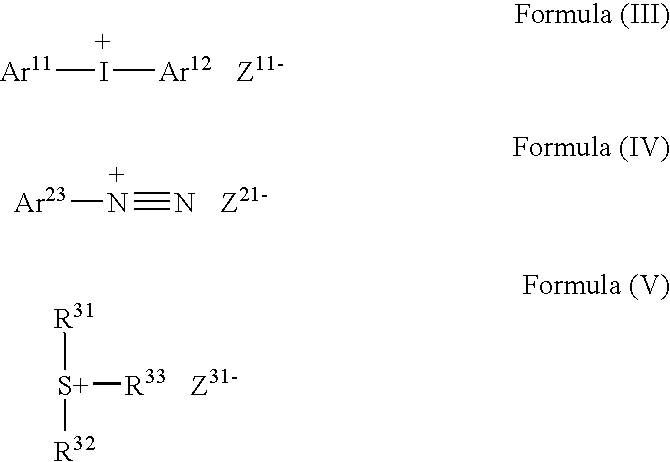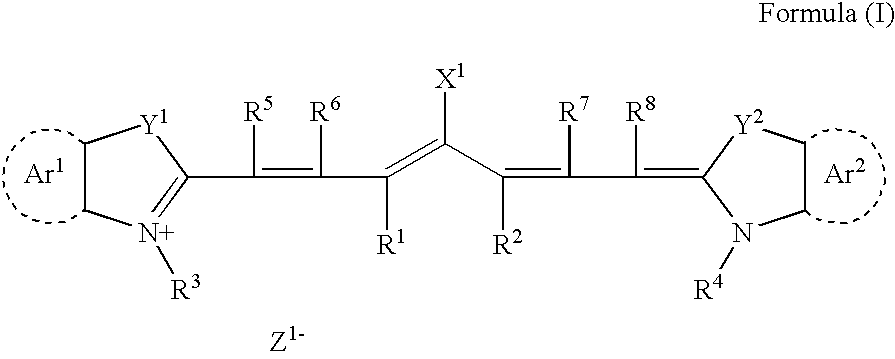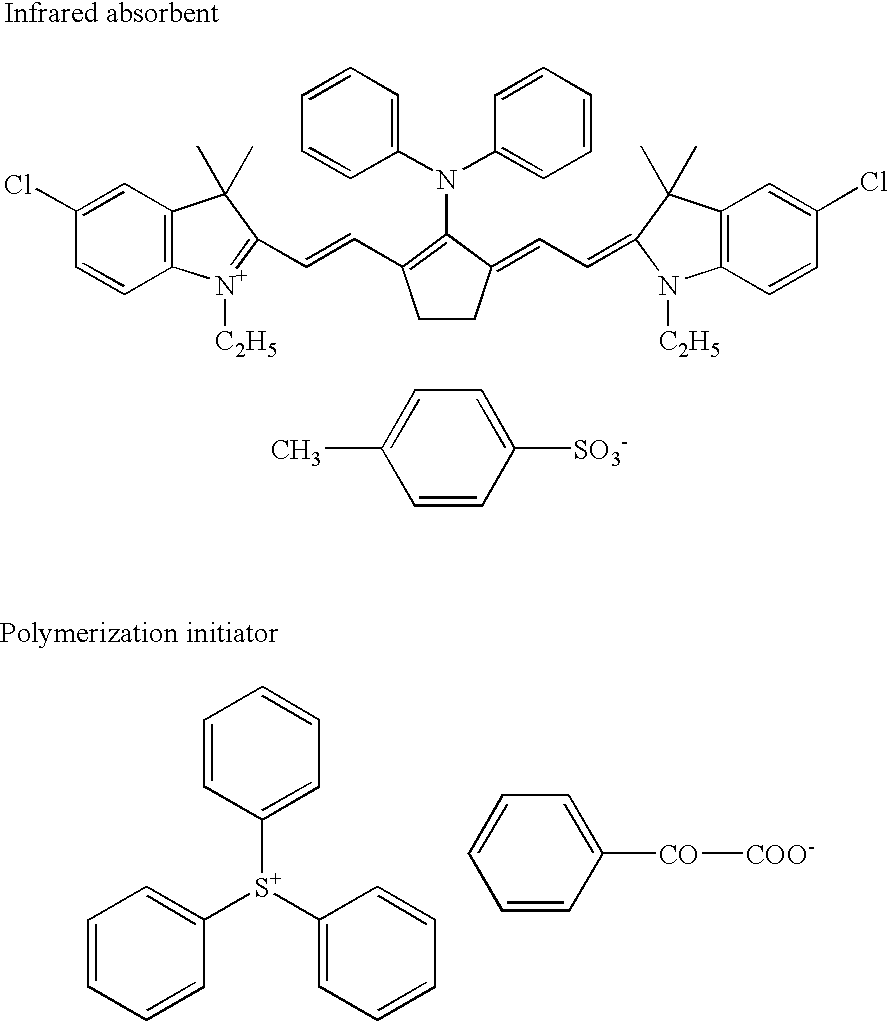Photopolymerizable composition
a composition and polymerizable technology, applied in the field of photopolymerizable compositions, can solve the problems of easy adhesion of photosensitive layers, decreased workability, and difficult separation
- Summary
- Abstract
- Description
- Claims
- Application Information
AI Technical Summary
Benefits of technology
Problems solved by technology
Method used
Image
Examples
example 1
Production of Support
An aluminum plate (material 1050) having a thickness of 0.30 mm was cleaned and degreased with trichloroethylene. Its surface was then grained with a nylon brush and a 400-mesh pumice water suspension, and washed well with water. The plate was etched by being dipped in a 25% sodium hydroxide aqueous solution at 45° C. for 9 seconds, and then washed with water. Thereafter, the plate was dipped in 2% HNO3 for 20 seconds and washed with water. At this time, the etching amount of the grained surface was approximately 3 g / m2. Subsequently, the plate was anodized with 7% H2SO4 as an electrolyte at a current density of 15 A / dm2 and a rate of 3 g / m2 to form an oxide film. The resulting plate was then washed with water. Thereafter, the following undercoat solution was coated on the aluminum plate, and the coated plate was dried at 80° C. for 30 seconds. The coating amount after the drying was 10 mg / m2.
Undercoating
Subsequently, the following undercoat solution was coated ...
PUM
| Property | Measurement | Unit |
|---|---|---|
| maximum absorption wavelength | aaaaa | aaaaa |
| glass transition point | aaaaa | aaaaa |
| wavelength | aaaaa | aaaaa |
Abstract
Description
Claims
Application Information
 Login to View More
Login to View More - R&D
- Intellectual Property
- Life Sciences
- Materials
- Tech Scout
- Unparalleled Data Quality
- Higher Quality Content
- 60% Fewer Hallucinations
Browse by: Latest US Patents, China's latest patents, Technical Efficacy Thesaurus, Application Domain, Technology Topic, Popular Technical Reports.
© 2025 PatSnap. All rights reserved.Legal|Privacy policy|Modern Slavery Act Transparency Statement|Sitemap|About US| Contact US: help@patsnap.com



